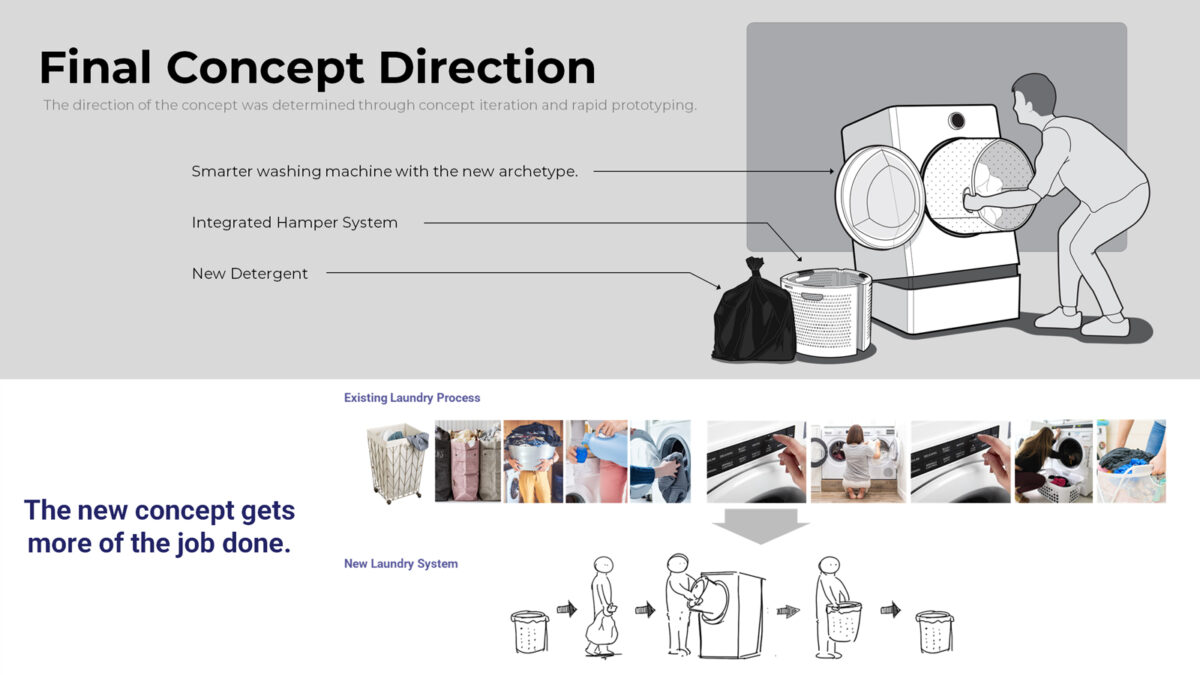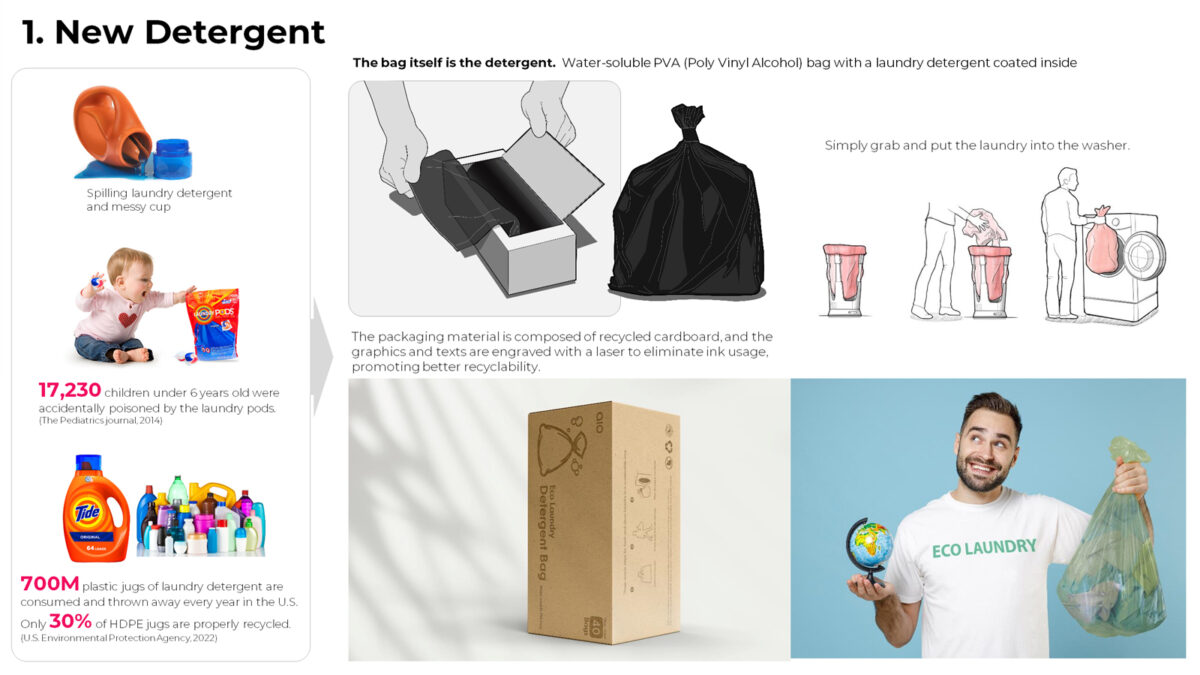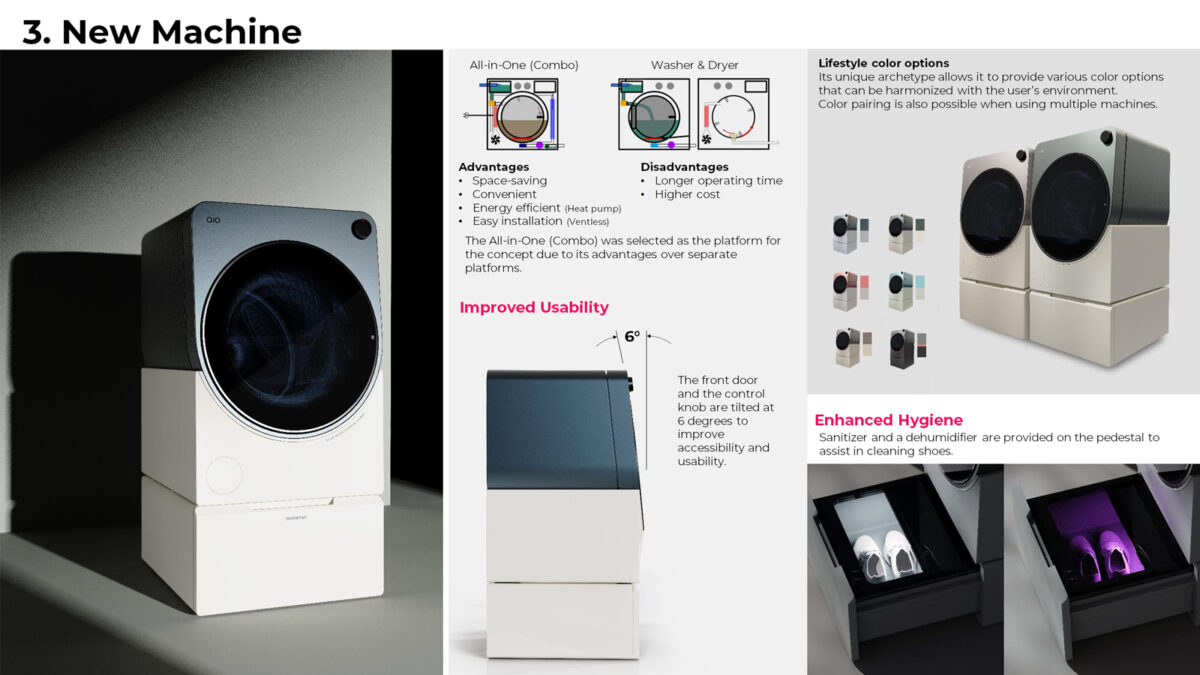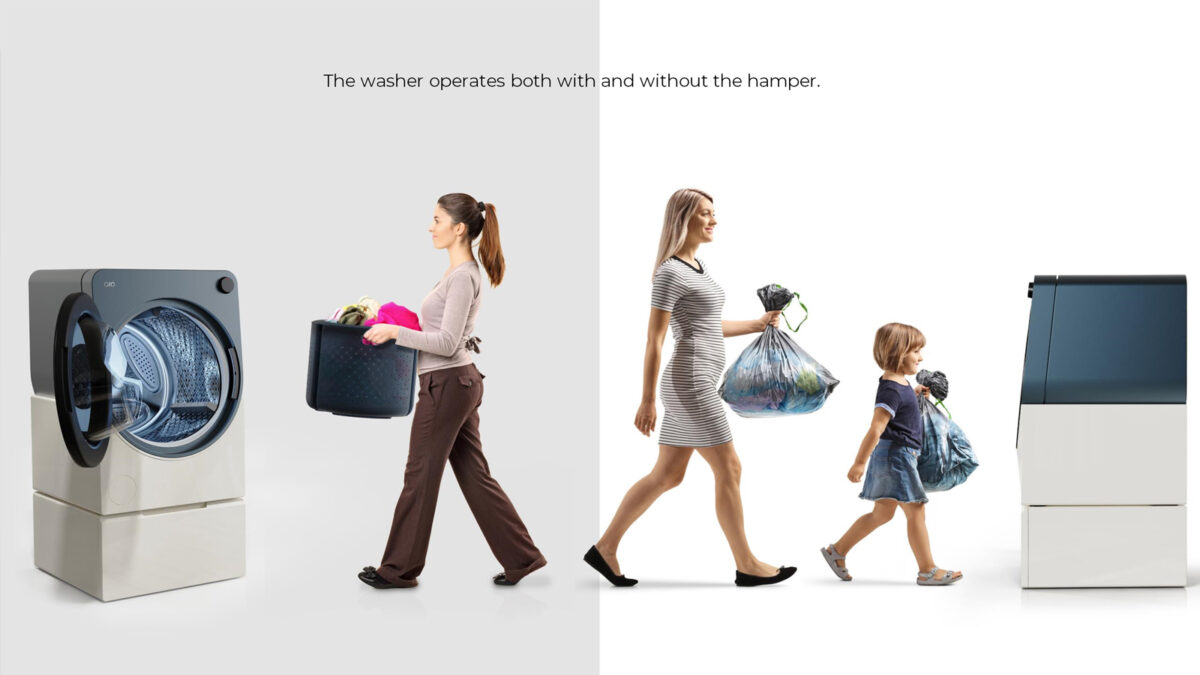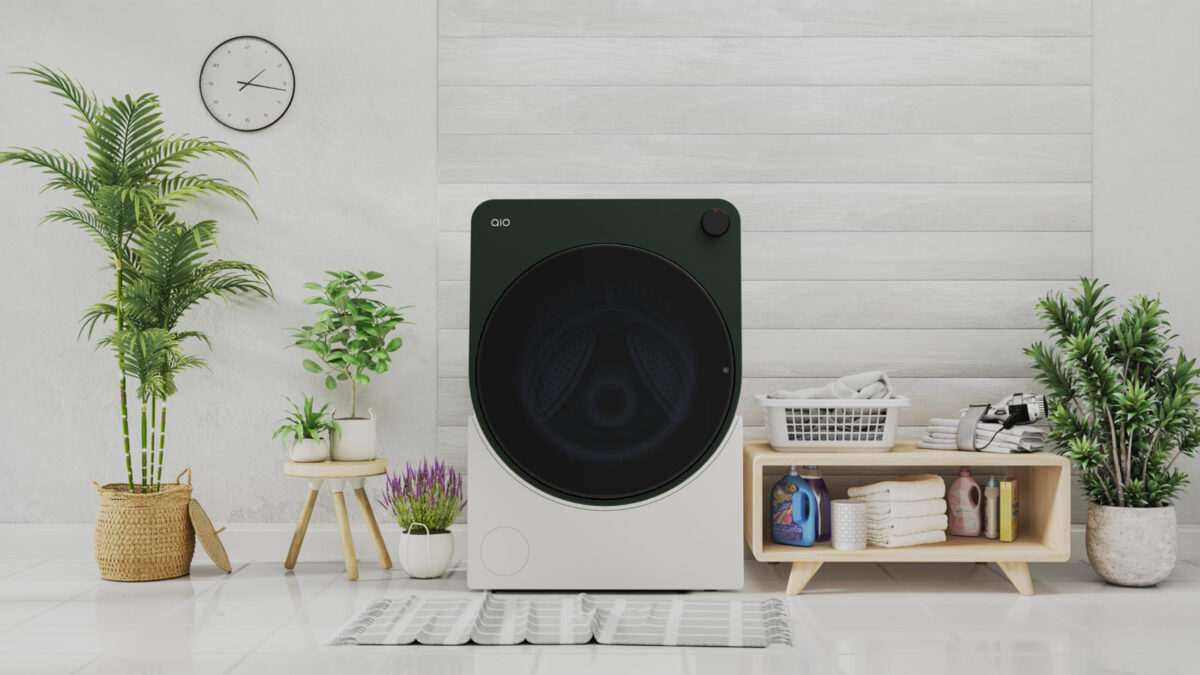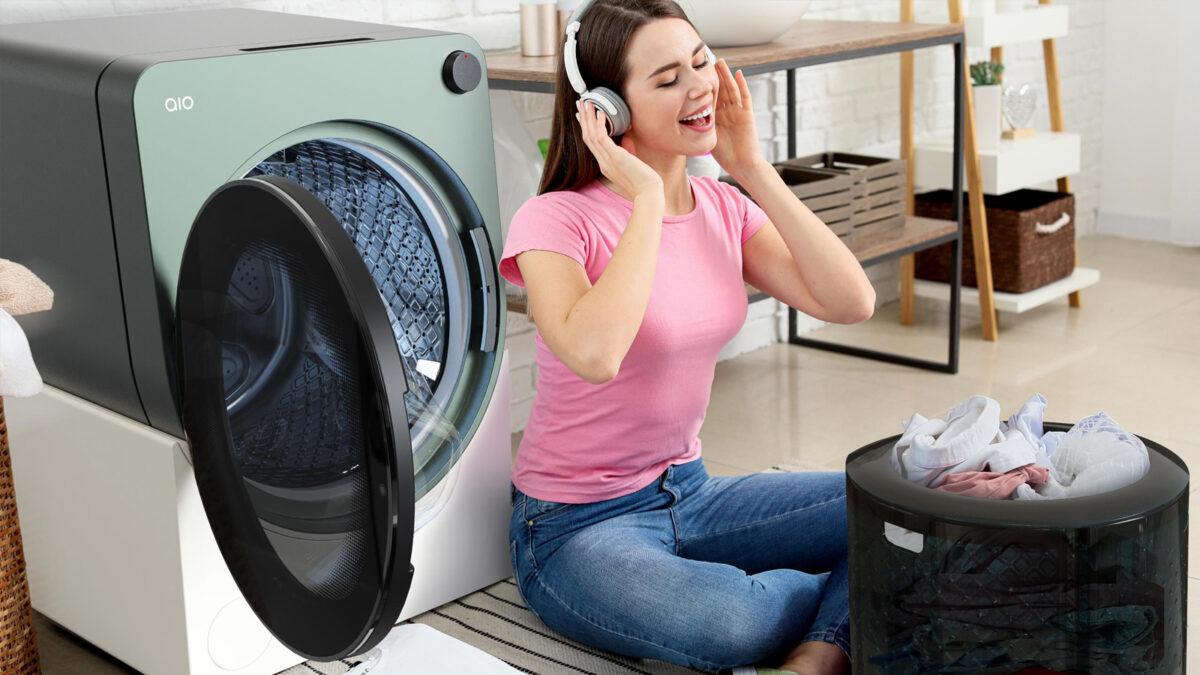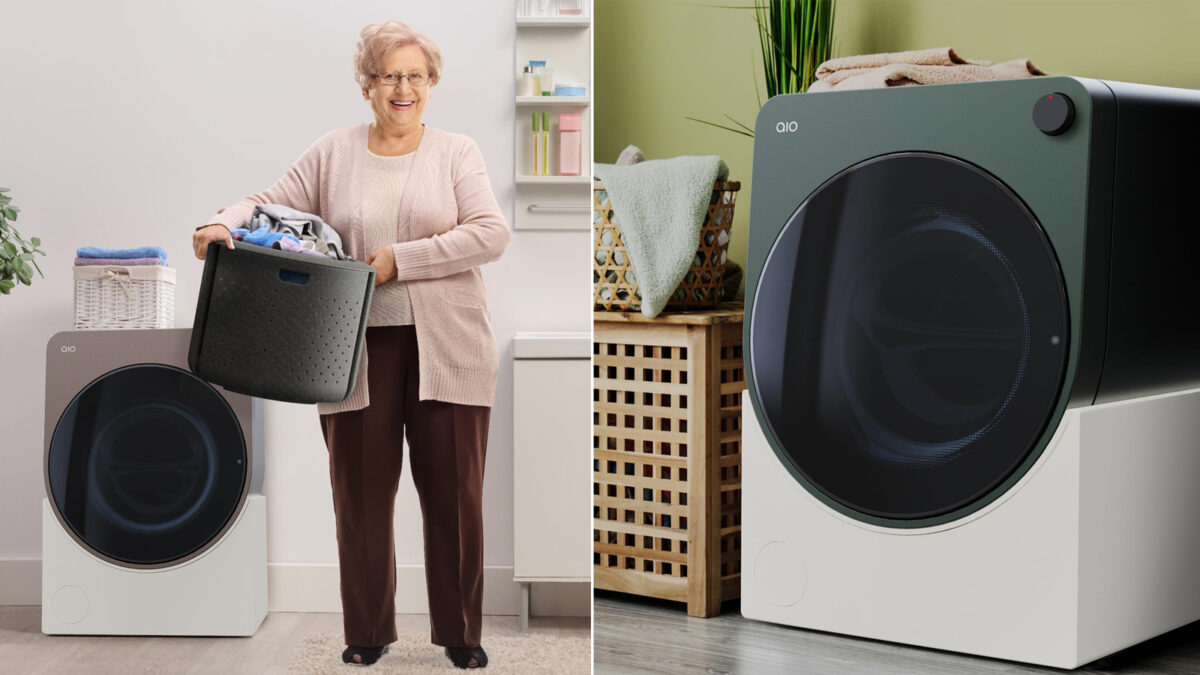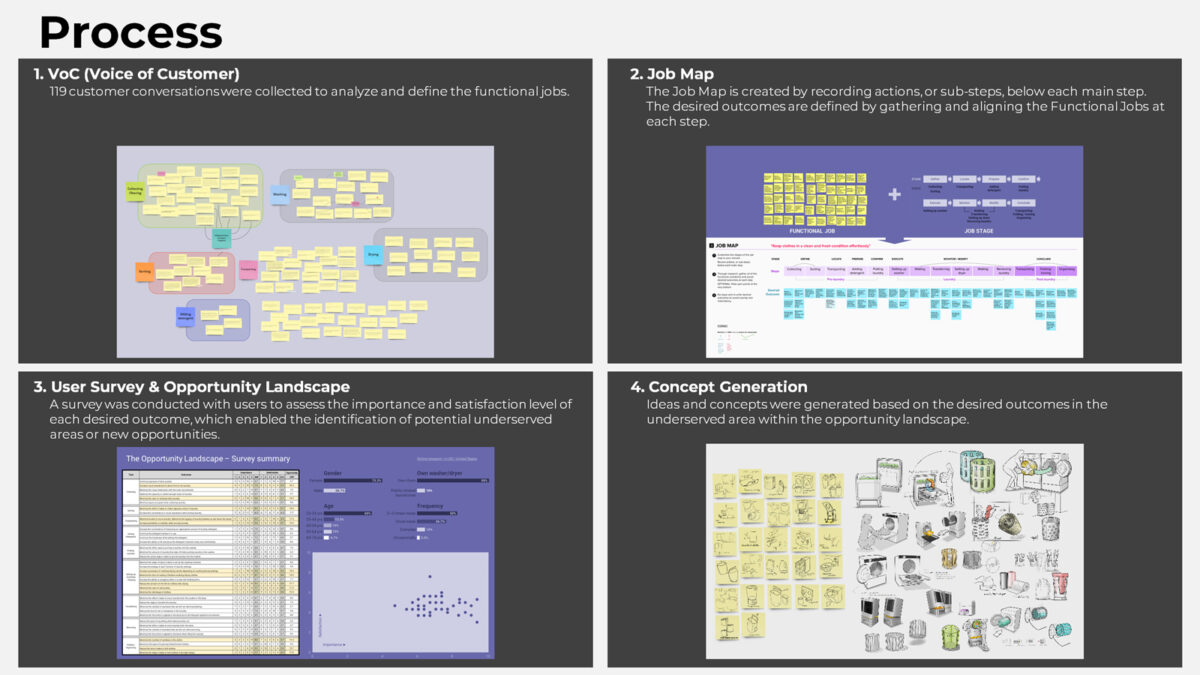
Laundry is a household task that is a part of our daily routine. According to The Bureau of Labor Statistics, on average, individuals spend nearly two hours per week on laundry. With an increased emphasis on hygiene, people have been spending more time on laundry post-pandemic. A survey conducted by OnePoll revealed that individuals spend 46% more time on laundry than before. Despite the necessity of laundry, it is identified as one of the chores American hate. This research aims to offer a design solution that makes this task more convenient and enjoyable.
Dr. Clay Christensen, a Harvard professor, introduced the Jobs-To-Be-Done theory. According to this theory, people don’t purchase products and services merely for their functionality; they hire them to fulfill a specific job in their lives. Needs may meet customers’ expectations but do not address their ultimate unmet needs. This research incorporates the desire-based Jobs-To-Be-Done theory into the design process to provide solutions from a new perspective.
There has been a greater focus on technological advancements in the laundry machine market than on user-centered convenience. This research project established a new laundry system design proposal that can solve customers’ pain points by prioritizing their desires.

